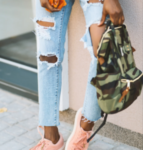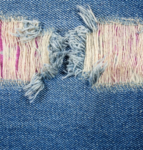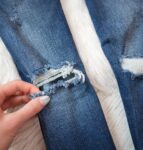Need to buy some fabric for a project at home? How much will it cost? Are there any discounts? These are the kinds of questions that anyone who plans to buy fabric will have to answer at some point. If you’re a beginner, you’ll want to know how much fabric you need for different projects and how much it will cost. If you’re a professional, you’ll want to know if you can get a discount for buying fabric by the yard or in bulk. A yard is a standard measurement of length used in the United States, Canada, and the United Kingdom. It is equal to 3 feet or 36 inches. This article explains what a yard is, how much fabric you’ll need for different projects, and the cost per yard to calculate how much fabric you need.
The amount of fabric in a yard depends on the type of fabric and how it is sold. There are two main types of fabric that are sold by the yard: uncut fabric and cut fabric. You will also find some fabrics that are sold by the yard but that have been pre-cut into a certain size or shape. This article will cover each of these types in turn. Uncut Fabric is the most common type of fabric sold by the yard. It consists of a single piece of cloth that has not been cut at all. It can be any length, width, and thickness (1/8″ to 5/8″). The length is measured in yards, while the width and thickness are measured in inches. You can buy uncut fabric from many stores or online shops including Walmart, Joann Fabrics & Crafts, Amazon, etc. To use uncut fabric you need to cut it yourself with a pair of scissors or a rotary cutter using pattern pieces for guidance. Depending on your project you may need to sew your pieces together as well as cut them apart again later on. If you’re new to sewing this can be difficult so make sure you read up on how to use uncut fabric before buying any!
What is a Yard?
A yard is a standard measurement of length used in the United States, Canada, and the United Kingdom. It is equal to three feet or 36 inches. There are two different systems used in the U.S. and Canada. The first is an imperial system that uses yards as its standard unit of measurement, while the other is anSI-based system that uses feet as its standard unit of measurement. In the U.S., one yard is equivalent to 0.9144 meters. The yard was originally derived from the length of a human yard (armpit to fingertips). In the 19th century, countries started to adopt standard measurements, and the yard was one of these standards. The yard was originally adopted from the length of a yard of wool. Where wool was traded internationally, there was a need for a standard unit of measurement. This is where the yard was adopted. Since it was adopted from a yard of wool, it is assumed that the original yard was the length of wool from one sheep’s armpit to its fingertips.
How Much Fabric Do You Need?
The amount of fabric you’ll need for a project will depend on several factors, including the size of the project, the style and color of the fabric, and the complexity of the project. You’ll also have to factor in the amount of time that you have to complete your project. Most finished projects will require a minimum of 18 inches of fabric per square foot, but some projects will require as much as ½ yard—or more if you’re planning on making something elaborate. The amount of fabric that you’ll need will vary depending on the size of the project, the complexity of the project, and the time that you have to complete it. You may also have to factor in the amount of time that it will take you to cut the fabric and sew it together. The following table will help you determine the minimum amount of fabric that you’ll need for different projects.
How Much Does It Cost Per Yard?
The cost per yard is the price you’ll pay per yard of fabric. The amount of fabric that you buy will depend on the cost per yard and how many yards you buy. Generally, you’ll pay the least amount of money per yard for bolts of fabric that are less than 18 inches in width, while you’ll pay more per yard for wider bolts. The following table can help you determine how much you’ll pay per yard.

Buying in Bulk: Is It Worth It?
Bolts of fabric sold in larger quantities are known as bolts or rolls, and you’ll typically see these sold in 50-yard, 100-yard, or 200-yard increments. These are typically sold in ¼, ½, or ¾ yards. You’ll also typically see smaller quantities, such as 10-yard increments. If you’re just starting out, you may want to start with smaller quantities so that you’re less likely to run short on fabric for a project. Buying in larger quantities is often called “bulk buying,” and it’s meant to save you money on fabric. There are a couple of important things to keep in mind when thinking about whether to buy in bulk. The first is that it’s important to plan ahead. If you know that you’re going to need a certain amount of fabric in the near future, you may want to buy a smaller quantity to avoid having to buy it later at a higher price. The other thing to keep in mind is that it may take more time to cut and sew together the fabric in larger quantities. If you’re pressed for time, you may want to buy in smaller quantities so that you don’t have to factor in time spent cutting and sewing.Larger quantities may be cheaper, but they’re also more difficult to work with.The fabric you buy in larger quantities will typically be thicker and heavier, so it will take more time to cut and sew together. It’s often better to buy smaller quantities if you want to save money on fabric. If you have the time and patience, consider buying in larger quantities because it can save you money over time. When buying in larger quantities, it’s important that you keep an eye on the amount of fabric left before you run out. You may have a hard time estimating how much fabric is left in large quantities because the number of yards changes depending on the type of fabric and where it’s stored. Some companies mark their fabrics up by 10 percent or 20 percent, which means that the first 10 or 20 yards are marked at a higher price than the rest of each roll (or bolt). Storing fabrics can be tricky because they often come on rolls or bolts instead of being folded up into small packages like other fabrics do. You may find that some stores charge more for their rolls than other stores do for their bolts. The best way to figure out how much fabric is left in a roll or bolt is simply to pull a few inches off and see how many yards are left; when you get close to the end, pull another inch off so that you can accurately estimate how much is left.
Finding a Discount for Fabric
If you’re looking for a way to save money on fabric, you may want to consider joining a fabric club. These are groups of people who pool their resources and buy larger quantities of fabric in bulk at a discounted price. They then sell the fabric to members at a discounted price. There are a number of different types of fabric clubs, and they may operate on a monthly, quarterly, or annual basis. Some clubs require that you sign up for a certain amount of time, while others let you cancel your membership at any time. If you don’t have time to research clubs properly and still want to save money on fabric, you may want to consider buying from a seller with a return policy. This is a seller who will allow you to return fabric that you don’t need or that you buy by mistake. You’ll save money in the long run by not buying fabric that you don’t need or that you don’t use.
A Word from Verywell
There are many different ways to save money on fabric, whether you’re looking for a way to reduce your fabric budget or you simply want to save money on an item that you use every day.
Final Words: How to Find the Best Deals
The best way to save money on fabric is to buy in bulk and join a fabric club. If you can’t do that, try to buy from sellers with a return policy and from sellers who offer free shipping. If you have to buy from a store instead of a seller with a return policy, make sure you check the sales tags to see if they’re offering any discounts.



